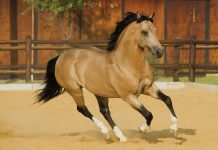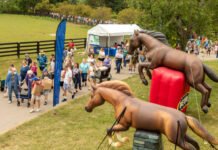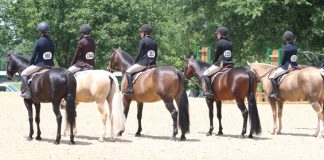 If you want to do a dressage test in the future, it’s important to know what “free walk” is. Free walk is a movement that appears on just about every dressage test in existence! Whether you’re an eventer or do pure dressage, the free walk is a skill you and your horse must master.
If you want to do a dressage test in the future, it’s important to know what “free walk” is. Free walk is a movement that appears on just about every dressage test in existence! Whether you’re an eventer or do pure dressage, the free walk is a skill you and your horse must master.
What is a Free Walk?
Your horse must stride across the arena with purpose, with his hind hooves overstepping the tracks of his front hooves by six to eight inches.
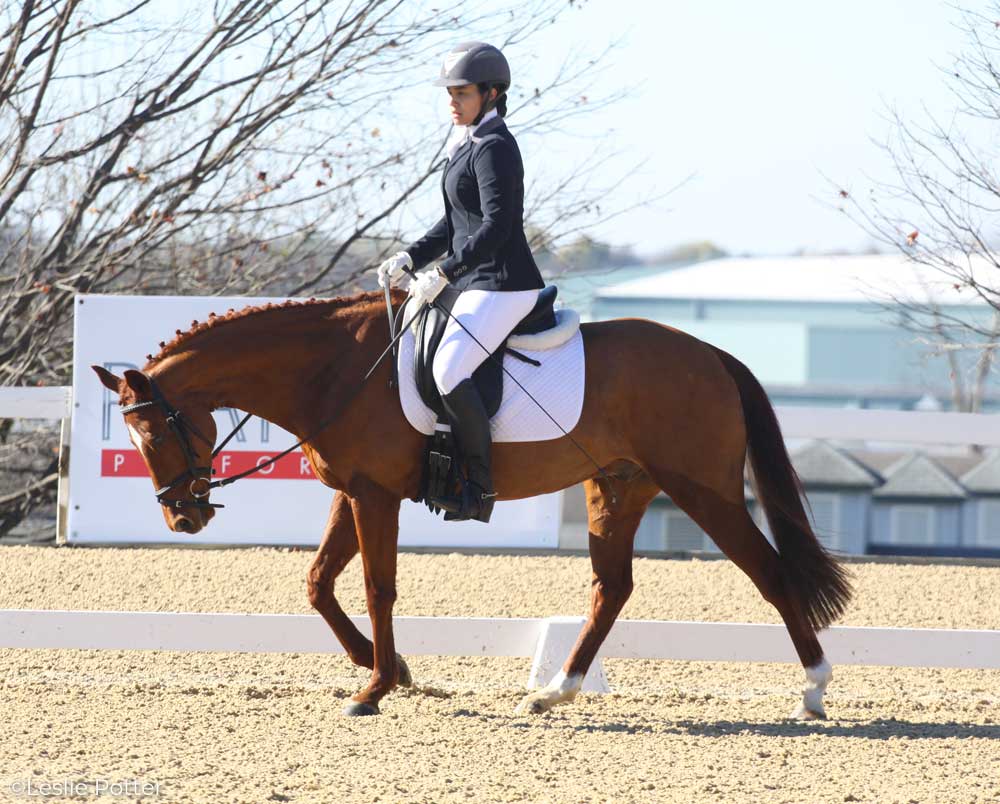
Doing free walk isn’t as easy as you think! Lots of riders believe that doing free walk simply means loosening your reins completely and praying that your horse puts down his head as he walks along. But doing this isn’t going to earn you great dressage scores!
Judges expect to see a small amount of contact when you do free walk. Most want you to ride on a long rein, allowing your horse to stretch out his head and neck while you continue to maintain a very slight connection with the bit.
Before teaching your horse free walk, it’s important to establish a good medium walk with him.
What is a Medium Walk?
Medium walk is when your horse strides out energetically while keeping a regular rhythm. Almost all dressage tests have movements that are in medium walk, so you’d better practice it! In medium walk, your horse’s hind hoof prints should land slightly in front of his fore hoof prints.
How to Develop a Medium Walk
When you ask your horse for medium walk, keep a light, steady, even contact on both reins. Hold your hands about a fist apart and slightly in front of his withers. Keep your elbows at your sides. Press your thumbs down firmly on the reins to make sure they don’t slip through your fingers if your horse pulls forward.
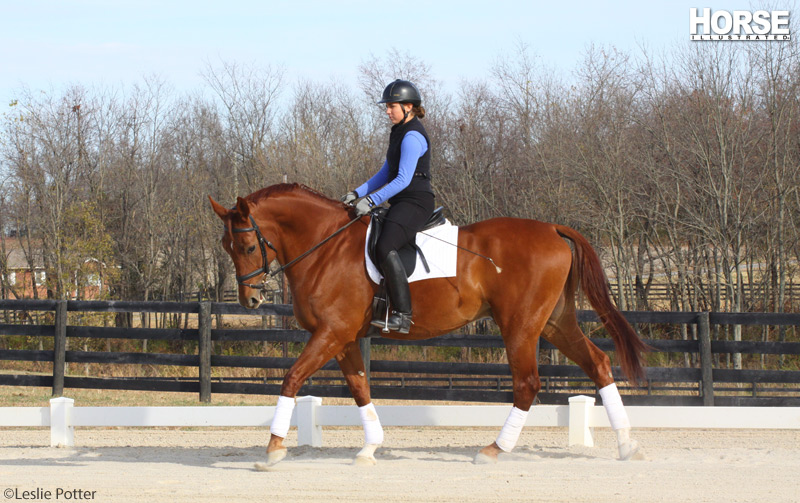
Sit tall and make sure your weight is evenly distributed on both seat bones. Stay balanced. Look up, between your horse’s ears, and squeeze him forward with both of your calves. Your horse should respond to a light touch of your legs and move forward into walk. If he doesn’t, use a stronger leg aid. If he still ignores you, quickly tap him with the crop behind your leg.
Another way to ask a lazy horse to walk forward with energy is to squeeze him with alternating legs. Press with your right leg and then your left as he walks along.
As he walks, your horse’s head goes up and down. Follow his head movement with your hands. As you squeeze him forward with your legs, squeeze the reins with your fingers to ask him to raise his neck slightly and bring his head in a little bit.
Contact at the trot and canter
If you plan to ask for free walk, it’s essential that your horse accepts contact with the bit at the medium walk, the trot and the canter. If you ride around on a loose rein all of the time, your horse won’t learn to stretch down and ask you to loosen your hold on the bit and his mouth. He has no reason to ask for a looser rein, because he’s always on one!
When you school, work on getting your horse to trot and canter forward in a bouncy, energetic way while you maintain a feel on his mouth. You don’t have to have a death grip though. Keep your hands soft but keep a straight line from your elbow, down the reins to the bit.
Practicing “long and low” at the trot will help teach your horse free walk. When your horse is moving forward nicely at the trot, take up contact with his mouth, Sit up straight, shorten your reins and squeeze with your fingers until your horse becomes round and on the bit.
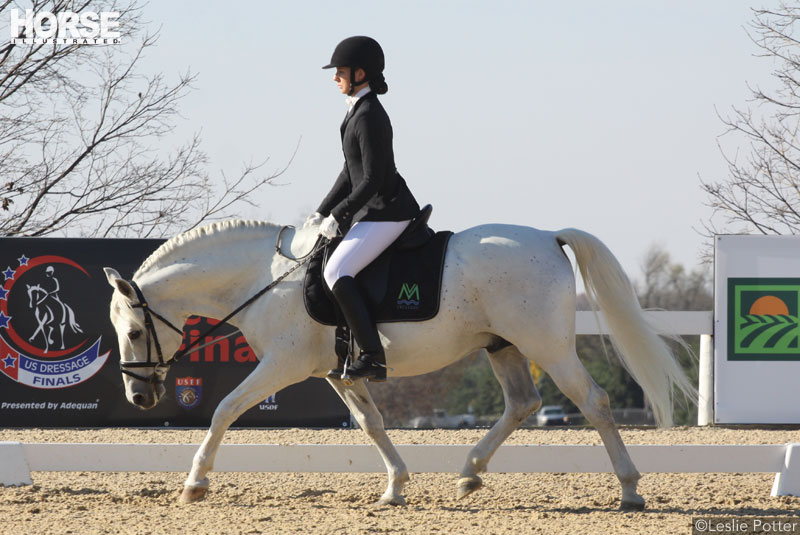
When he’s trotting nicely, soften your hands and allow him to stretch his head down. It may take a while before your horse realizes what you’re asking him to do so you may have to pick up your contact again, trot a few more strides and then soften your hands again. If he stretches his neck and head down, loosen your hold on the reins and let them slip through your fingers a bit. Don’t let go completely. Keep a soft contact. Continue asking him with your legs to maintain a rhythmic, bouncy trot.
Once he’s learned to stretch down at the trot, he should know what you want when you ask him for free walk.
Teaching free walk
After you warm up your horse at the trot and canter, bring him back to a medium walk. Don’t lose your rein contact. Walk up the long side of the arena and then round the short side. At the lower levels of dressage, free walk is usually done while crossing the arena diagonally so begin turning your horse to cross the diagonal.
When you finish bending and are about to go straight, loosen your hold on the reins a bit. Your horse should reach forward with his head and neck and pull the reins slightly out of your hands. Let the reins slip through your fingers an inch or two—don’t let go completely.
Some people find that their horses perform better if they lower their hands a bit so they are on either side of the horse’s neck, not over his withers. Wiggle your fingers so your horse knows that you’re still in control.
Keep your legs firmly on your horse’s sides and encourage him to stride forward. When you reach the other side of the arena, slowly pick up the reins, ask your horse to pick up his head and then go forward in medium walk again.

